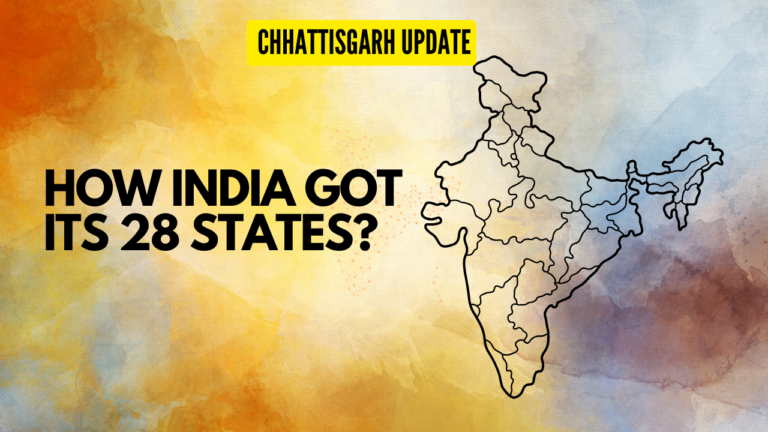Surguja district, located in the Indian state of Chhattisgarh, is a place steeped in history, culture, and natural beauty. With its diverse population and rich heritage, Surguja offers a unique and captivating experience for travelers and history enthusiasts alike. In this comprehensive guide, we will delve deep into the district’s history, geography, culture, and more, providing you with valuable insights to help you explore Surguja to the fullest.
History of Surguja District
Mythological Significance
Surguja holds a special place in Indian mythology, as it is believed that Lord Rama, during his 14 years of exile in the forests, visited this region. Many places in Surguja are named after Lord Rama, Laxmana, and Goddess Sita, such as Ramgarh, Sita-Bhengra, and Laxmangarh. This mythological connection adds a layer of intrigue to the district’s history and landscape.
Early Dynasties
Before the Mauryas arrived, Surguja was ruled by the Nandas. However, in the third century BC, the region was divided into tiny kingdoms. In 1613, a Rajput king from the Rakshal clan launched an attack from Palamu in what is now Jharkhand and took control of the area. Subsequently, in 1753, the Marathas invaded Surguja and forced the local king to become a vassal. The district saw several changes in rulership until the British gained control during the Third Anglo-Maratha War in 1818.
The Era of Princely States
During the British Raj, Surguja was a princely state. In 1820, Amar Singh was crowned as Maharaja, marking an important chapter in the district’s history. This princely state continued until India gained independence.
Integration into Madhya Pradesh and Chhattisgarh
In 1951, Surguja became a part of the new state of Madhya Pradesh. However, in 2000, with the formation of the state of Chhattisgarh, Surguja became one of its districts. This transition marked a significant milestone in the district’s political and administrative history.
Geography and Topography
Surguja is located between 23°37’25” to 24°6’17” north latitude and 81°34’40” to 84°4’40” east longitude. It covers a vast area of about 5,732 square kilometers, making it a region of considerable size and geographical diversity.
The district’s topography is characterized by a series of highlands with small tablelands, locally known as ‘pat formations.’ Major parts of Surguja include Mainpat, Jarang pat, Jonka pat, Jamira pat, and Lahsunpat. These highlands offer stunning views and unique landscapes for travelers to explore.
The average elevation in the area is above 600 meters (2,000 feet), and Surguja boasts several prominent peaks, such as Mailan at 1,226 meters (4,022 feet), Jam at 1,166 meters (3,825 feet), and Kanda Dara at 1,149 meters (3,770 feet). The hilly terrain in the north-western part of Surguja gradually gives way to a low basin in central Surguja, through which the Rihand River and its tributaries flow.
Soil Types
Surguja’s soil can be broadly classified into four major types:
Red and Yellow Soils: These soils are derived from the parent rocks of the Gondwana System, including sedimentary rocks. They are formed in-situ from the erosion of such rocks caused by rain. These soils are found predominantly in east Sitapur, south Ambikapur, central Surajpur, and Pratappur blocks. The red color is attributed to the diffusion of iron, while hydration of ferric oxide results in a yellow color. These soils are known for their porous and friable structure.
Alluvial Soils: Found along river banks in alternate layers of sand and silt in East Ramanujganj, North Ambikapur, and Surajpur, these soils are generally transported from elsewhere. They vary in color from yellow to grey and play a vital role in agriculture.
Laterite Soils: Well-developed on the summits of the plateau regions of Samri and Sitapur tehsil, these soils are prominent in Shankargargh, Kusmi, Sitapur, Batoli, and Mainpat blocks. Laterite soils are characterized by their rich iron content and unique physical properties.
Medium Blue Soils: This category includes various soil types with a medium blue coloration. While less prominent than the other soil types, they still contribute to the region’s diverse agricultural landscape.
River Basins
Surguja district is blessed with an extensive network of rivers and tributaries. The major river basins in the district include:
Rihand River Basin: The Rihand River, also known as the West Rihand River, flows through Surguja, originating from Chhattisgarh and eventually merging with the Son River. It plays a vital role in irrigation and agriculture in the region.
Gopad River Basin: The Gopad River is another important river in Surguja, flowing through the northern part of the district. It joins the Rihand River near Bansagar Dam, adding to the district’s natural beauty.
Rajadera River Basin: This basin includes the Rajadera River and its tributaries. These water bodies are crucial for both agriculture and the local ecosystem.
Other Rivers: Surguja is also home to several other smaller rivers and streams, contributing to the district’s overall water resources and scenic beauty.
Climate
Surguja district experiences a tropical climate with distinct seasons:
Summer (March to June): Summers are hot and dry, with temperatures often rising above 40°C (104°F). This season can be challenging for outdoor activities, so travelers are advised to plan accordingly.
Monsoon (July to September): The monsoon season brings relief from the scorching heat and is characterized by heavy rainfall. The lush green landscapes during this time make it a great period for nature enthusiasts to visit.
Post-Monsoon (October to November): After the monsoons, the weather gradually becomes cooler and more pleasant, making it an ideal time for travelers.
Winter (December to February): Winters in Surguja are cold and dry, with temperatures often dropping below 10°C (50°F). This season is perfect for those who enjoy cool weather and outdoor activities.
Flora and Fauna
Surguja’s diverse geography and climate support a rich variety of flora and fauna. The district is home to numerous species of plants, trees, and wildlife. Some of the notable flora and fauna include:
Flora
Sal Trees: Surguja is known for its lush Sal forests. Sal trees (Shorea robusta) are the dominant species here and are of significant economic and ecological importance.
Bamboo Groves: Bamboo is abundant in Surguja and plays a crucial role in the local economy, as it is used for various purposes, including construction and crafts.
Medicinal Plants: The region is rich in medicinal plants, which are traditionally used by local communities for various health remedies.
Teak Trees: Teakwood is another important tree species found in Surguja. It is valued for its high-quality timber.
Fauna
Tigers: The forests of Surguja are home to Bengal tigers. While spotting a tiger in the wild is rare, the presence of these majestic creatures adds to the district’s allure.
Leopards: Leopards are also found in the region, making it a potential destination for wildlife enthusiasts.
Elephants: Asian elephants roam the forests of Surguja, making it an important habitat for these gentle giants.
Deer Species: Several species of deer, including sambar and spotted deer, can be spotted in the forests and national parks of Surguja.
Birdlife: Surguja is a paradise for birdwatchers, with a wide range of avian species. Some of the commonly sighted birds include peafowl, parakeets, and hornbills.
Conservation Efforts
Efforts are underway to conserve the rich biodiversity of Surguja district. Several protected areas, wildlife sanctuaries, and national parks have been established to safeguard the region’s flora and fauna. The Sitanadi Wildlife Sanctuary and Udanti Wildlife Sanctuary are among the prominent conservation areas in Surguja.
Culture and Traditions
Surguja’s cultural heritage is a tapestry of diverse traditions, customs, and art forms. The district is home to various indigenous communities, each with its unique way of life. Here are some aspects of Surguja’s vibrant culture:
Tribal Communities
Tribal communities, such as the Korwas, Gonds, and Pando, have a significant presence in Surguja. They have their own languages, customs, and traditions, which are deeply rooted in the region’s history.
Folk Music and Dance
Folk music and dance are integral to Surguja’s cultural identity. The Karma and Sohar dance forms are popular among the locals and are often performed during festivals and celebrations.
Festivals
Surguja celebrates a variety of festivals with great enthusiasm. Some of the prominent festivals include:
Karma Festival: This is one of the most important festivals for the tribal communities of Surguja. It involves rituals, dances, and songs dedicated to the local deities.
Holi: Like in many other parts of India, Holi is celebrated with vibrant colors and enthusiasm in Surguja.
Dussehra: The Dussehra festival is marked by the burning of effigies of the demon king Ravana and cultural programs.
Handicrafts
The district is known for its intricate handicrafts, including bamboo products, woodcarvings, and traditional jewelry. These crafts reflect the skill and creativity of the local artisans.
Cuisine
Surguja’s cuisine is a delightful mix of flavors. Traditional dishes often include rice, lentils, vegetables, and locally sourced ingredients. Don’t miss the opportunity to savor authentic tribal cuisine when visiting the district.
Places to Visit in Surguja
Surguja offers a wide range of attractions for tourists, from natural wonders to historical sites and cultural experiences. Here are some must-visit places in the district:
1. Mainpat
Mainpat, often referred to as the “Shimla of Chhattisgarh,” is a picturesque hill station located in Surguja. The lush green landscapes, rolling hills, and pleasant climate make it an ideal destination for nature lovers. The Tibetan refugee camp in Mainpat is also worth a visit.
2. Sita-Bhengra
Sita-Bhengra is a place of mythological significance, believed to be the spot where Goddess Sita bathed during her exile. The temple dedicated to Goddess Sita is a sacred site and a serene place for spiritual seekers.
3. Birsamunda Lake
This serene lake is surrounded by dense forests and offers a peaceful escape from the hustle and bustle of city life. It’s an excellent spot for picnics and relaxation.
4. Udanti Wildlife Sanctuary
For wildlife enthusiasts, the Udanti Wildlife Sanctuary is a must-visit destination. It is home to a variety of animal species, including tigers, leopards, and elephants. The sanctuary also boasts diverse flora and fauna.
5. Sitanadi Wildlife Sanctuary
Sitanadi Wildlife Sanctuary is another haven for nature lovers and wildlife enthusiasts. It offers opportunities for trekking, birdwatching, and exploring the pristine wilderness.
6. Ramgarh
Ramgarh is a historically significant town in Surguja. It is believed to be the place where Lord Rama, Goddess Sita, and Lord Laxmana spent time during their exile. The Ramgarh Temple and the picturesque surroundings make it a unique attraction.
7. Amrit Dhara Waterfall
Amrit Dhara, meaning “The Stream of Nectar,” is a stunning waterfall surrounded by lush greenery. It’s an excellent place for a day trip and offers a refreshing natural retreat.
8. Shivrinarayan
Shivrinarayan is known for its beautiful temples, including the Lakshman Temple and the Shivrinarayan Temple. These ancient temples are architectural marvels and hold religious significance.
Conclusion
Surguja district in Chhattisgarh, India, is a treasure trove of natural beauty, rich cultural heritage, and diverse wildlife. Whether you’re a nature enthusiast, a history buff, or simply seeking a peaceful getaway, Surguja has something to offer every traveler. Its lush forests, pristine sanctuaries, and vibrant traditions make it a destination worth exploring. So, plan your trip to Surguja and immerse yourself in the charm of this hidden gem in India’s heartland.



